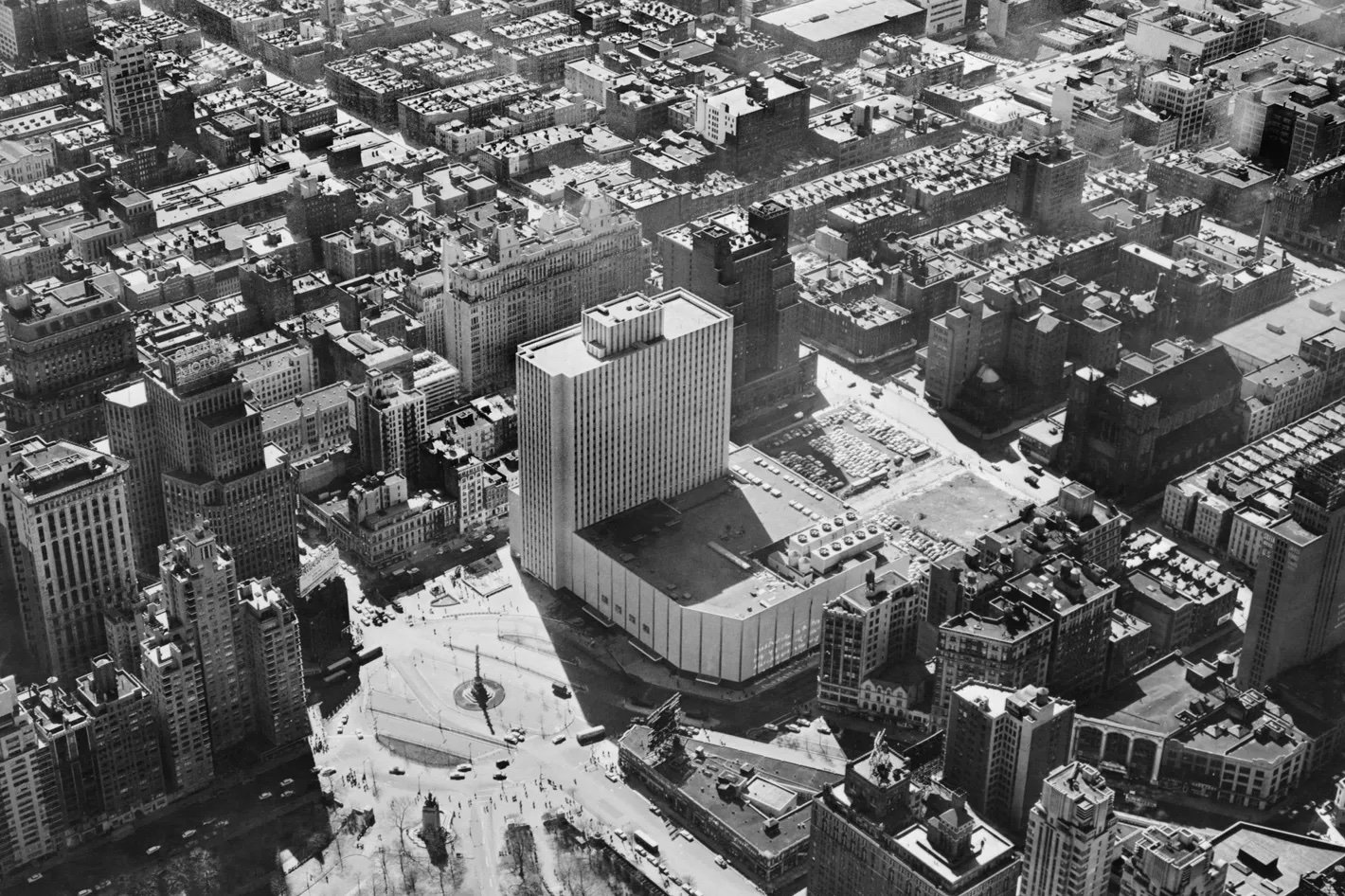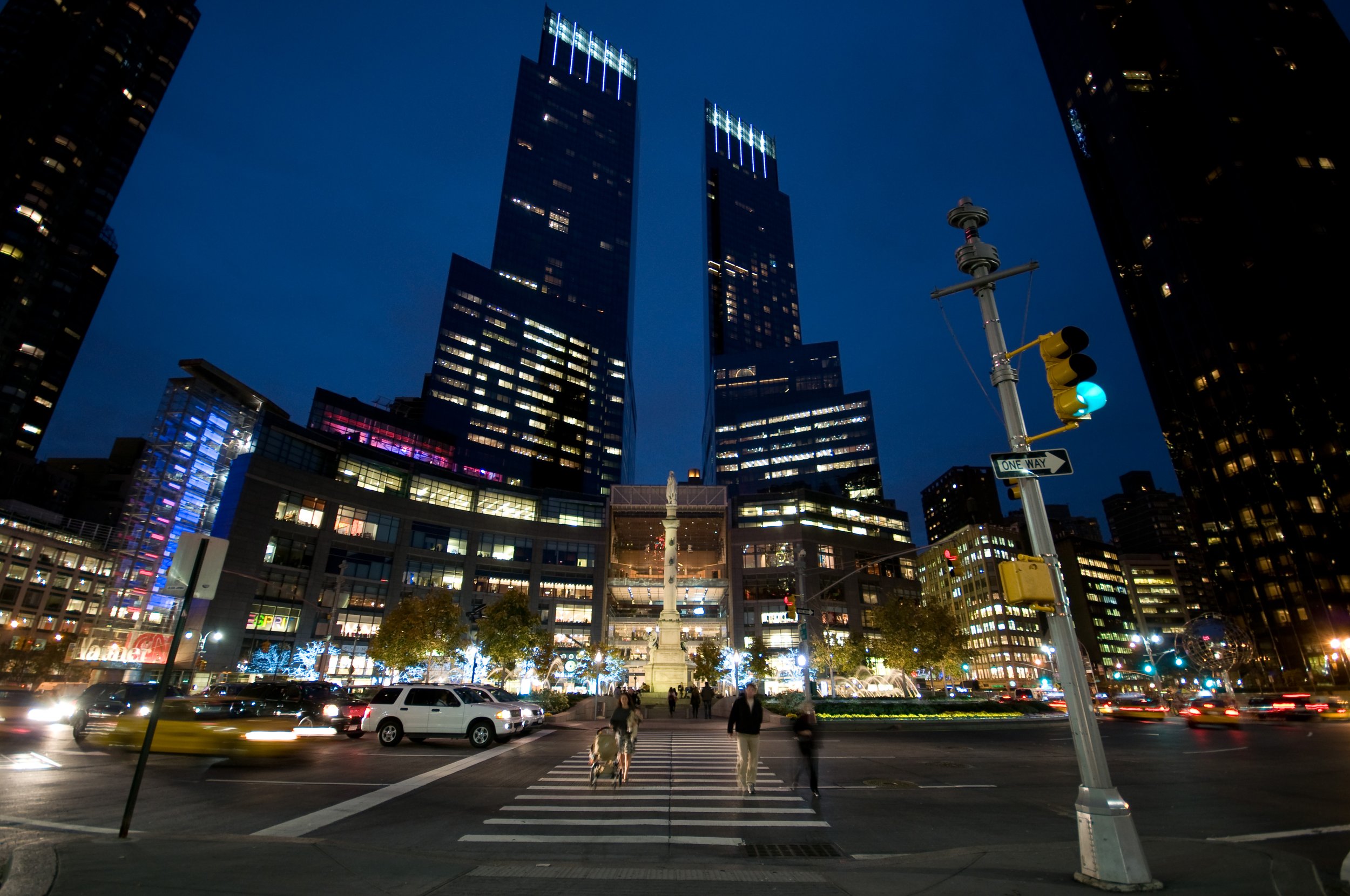Columbus Circle
When I moved to New York City in the summer of 2000, Columbus Circle was a massive construction zone. My first apartment was on the Upper West Side, so I passed through the area quite often. When the Time Warner Center finally opened in 2004, I was far from impressed. I had moved to Alphabet City and was embracing the gritty New York of old. The new, shiny skyscrapers full of luxury retail and fancy restaurants defied all of that.
Today, the transformation is complete and most New Yorkers directly associate Columbus Circle with The Time Warner Center (now the Deutsche Bank Center). But what was there before?
The traffic circle designed as part of Central Park, we know as Columbus Circle, officially got its name in 1905. In the first part of the 20th century, the area was mainly magazine publishers. Hearst Tower on 8th Avenue and 57th Street still remains. The neighborhood Old San Juan Hill took up the entire western side of Columbus Circle all the way to the Hudson River. It’s where jazz great, Thelonius Monk, grew up.
Columbus Circle circa 1921
Photo by Library of Congress
After WWII, New York City needed a convention center. Robert Moses, who had become quite powerful, decided that Columbus Circle would be the site of his newly envisioned Coliseum. This project required federal funding, so he condemned the area known as San Juan Hill and promised that he would build public housing along with his convention center. Razing San Juan Hill also paved ways for other projects such as Lincoln Center.
Photo by Library of Congress
The New York Coliseum opened in 1956 and had 323,000 square feet of space with four exhibition halls capable of displaying large items like airplanes and boats. The city even closed off 59th Street permanently to make way for the structure. A gray, windowless monolith, Christopher Gray of The New York Times said it was a “low point for New York’s public buildings”. It was, however, successful in hosting hundreds of events featuring natural history, yachts, cars, photography, and antiques.
Photos by Library of Congress
Photos by Library of Congress
The history of The New York Coliseum has always resonated with me personally because my late grandfather used to frequent it in the 1960's. He worked for General Motors for his entire career and early on, he would drive new cars from the factory in Detroit to the Coliseum for the annual Auto Show. These stories also included his adventures in the city. “Chris, I used to go to a place called Birdland down on 52nd Street and listen to Bee-Bop. One of my favorites was a guy who went by the name Charlie ‘the Bird’ Parker.” Not wanting to ruin his story I’d simply reply, “Bee-Bop? Charlie Parker? Tell me more.”
Photo by William Claxton
Tommy Potter, Charlie Parker, Dizzy Gillespie and a young ‘Trane’ (who is one of my personal favorites) - Photo by Birdland Archives
By 1979, many exhibitions were moving to other cities with larger spaces, and plans for the Javits Center were announced. This meant the end for The Coliseum. It closed in 1986 and sat vacant for nearly 15 years as various deals fell through. In 1998, the MTA finally sold the property to Time Warner and Related Properties for $345 million.
Photo by NY Mag
Columbus Circle and The Deutsche Bank Center have grown on me. As a runner, it’s the final beacon waving you home as you come across 59th Street on the final mile of The New York City Marathon.
Photo by Wiki Commons
It’s also a clear example of how New York City is an ever-changing landscape, slowly moving and architecturally evolving with us through time.
Interior View - Photo by Wiki Commons








